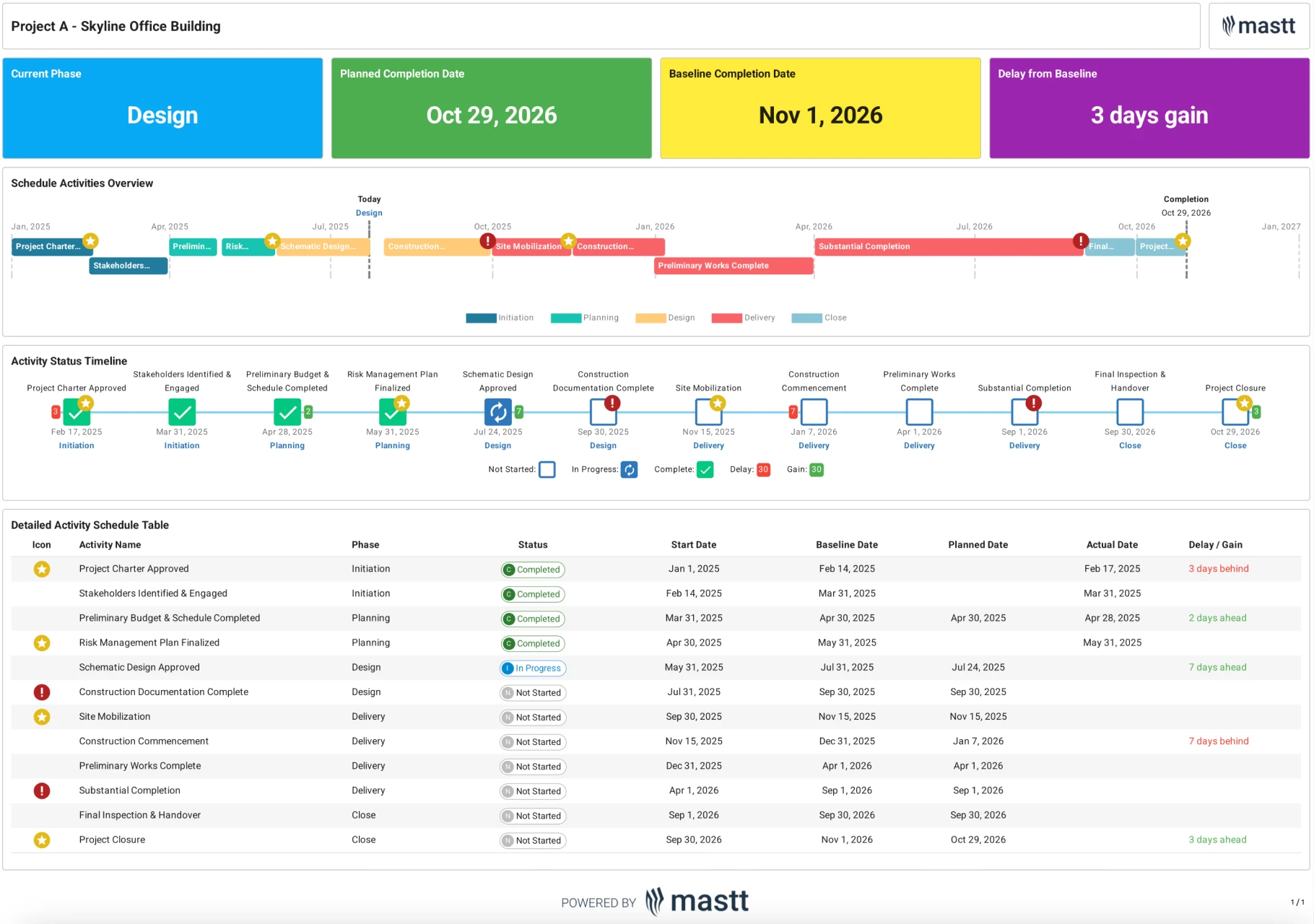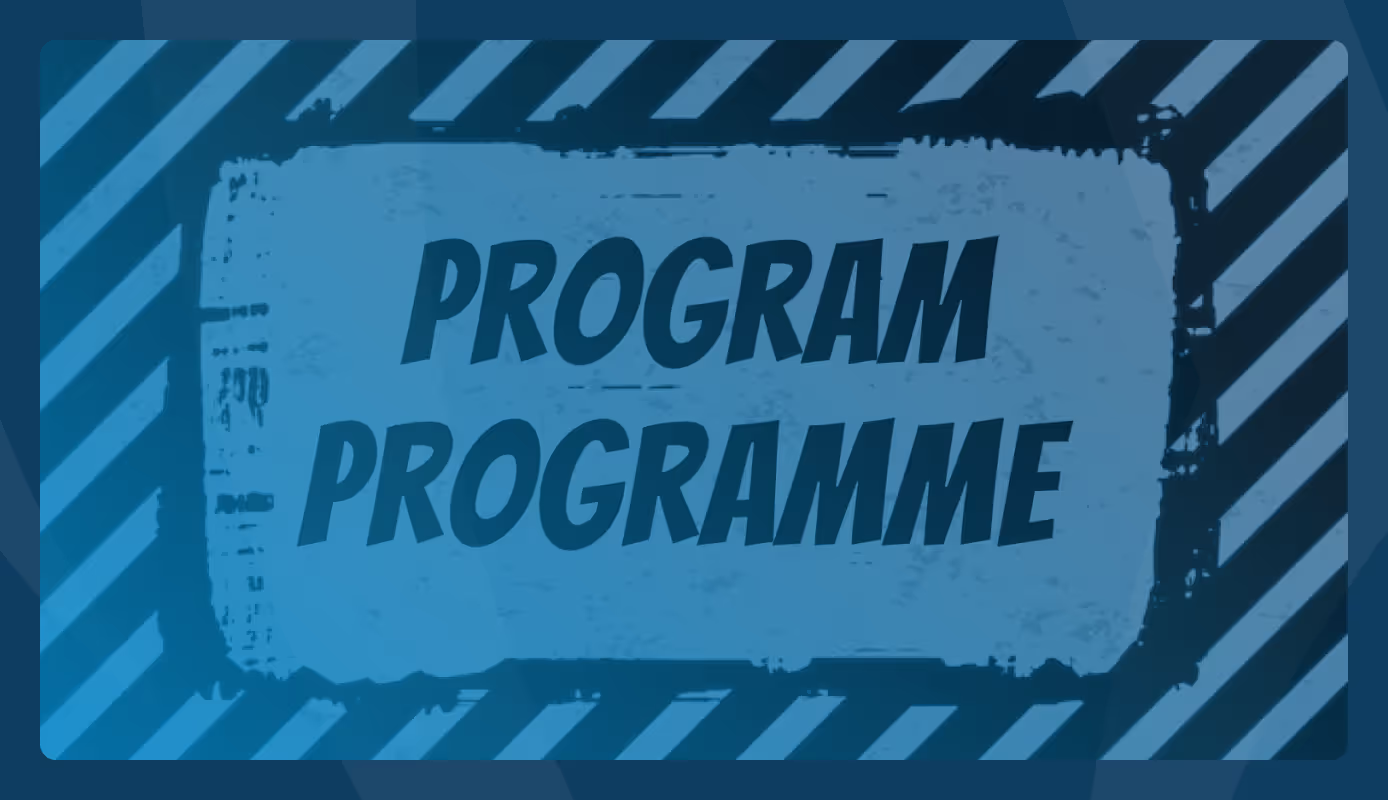The Precedence Diagram Method (PDM) is a powerful tool in project management, especially in construction, where organizing tasks and resources efficiently is essential to meeting deadlines and staying within budget. The precedence diagram helps project managers create clear and logical workflows that improve planning, scheduling, and coordination—critical in high-stakes industries like construction. In this guide, we’ll explore how PDM works, why it’s important, and how to create a precedence diagram example to enhance your project schedule.
What is the Precedence Diagram Method (PDM)?
The Precedence Diagram Method is a project management technique that allows managers to visualize task sequences, identify dependencies, and allocate resources more effectively. This method represents activities as nodes and connects them with arrows to illustrate relationships and task order, making it easier to see the project's overall flow. For example, in a construction project, the precedence diagram might show that pouring concrete must occur after site grading but before framing, ensuring all tasks flow logically without delays.
Using the precedence diagram method helps prevent scheduling conflicts, minimizes downtime, and enhances team productivity—essential advantages in a competitive industry where efficiency is critical. If you’re interested in learning more about how these fits within broader scheduling approaches, check out our guide on project scheduling.
Types of Dependencies in the Precedence Diagram Method (PDM)
In the precedence diagram, dependencies define how activities relate to one another. Understanding these dependencies is crucial for correctly sequencing tasks and avoiding project delays. Here are the primary dependency types used in the precedence diagramming method:
- Finish-to-Start (FS): The most common dependency, where one task must finish before the next can start. For instance, you can’t install windows until walls are constructed.
- Finish-to-Finish (FF): Both tasks must finish at the same time, even though they might start at different points. For example, inspection and painting might end simultaneously on different parts of a project.
- Start-to-Start (SS): Two activities begin simultaneously but don’t need to finish together. In a renovation, for instance, demolition and plumbing could start at the same time.
- Start-to-Finish (SF): The rarest type, where one activity’s start triggers the end of another. This is less common in construction but can apply to certain scenarios in complex projects.
These dependencies help managers see where flexibility exists in a precedence diagram and where critical dependencies must be respected to avoid delays.
Types of PDM Dependencies and Their Significance
Dependencies in the precedence diagramming method are often classified by the nature of the relationship. Recognizing these distinctions can enhance planning by helping you prioritize tasks based on necessity and external constraints:
- Mandatory Dependency: Required by the nature of the work (e.g., foundation before framing).
- Discretionary Dependency: Based on best practices or preferences, giving some flexibility to reorder tasks.
- External Dependency: Factors outside project control, such as waiting on a permit or third-party vendor.
- Internal Dependency: Dependencies managed within the project framework.
How to Create a Precedence Diagram: 6 Easy Steps
Creating a precedence diagram is a structured process that visually organizes project activities and their dependencies, helping to ensure that each task flows logically and sequentially. Here’s a step-by-step guide to creating a precedence diagram for your project:
1. Define Project Activities
- Begin by identifying all the tasks required to complete your project. Breaking down tasks with a Work Breakdown Structure (WBS) can be useful here. For instance, in a construction project, activities might include site preparation, foundation laying, framing, and finishing work.
- Ensure that each activity is defined as a discrete, measurable task. This clarity helps avoid overlap or confusion in later steps.
2. Determine Activity Sequence
- Arrange the identified activities in a logical sequence, reflecting the natural flow of work. In other words, figure out the order in which tasks must occur.
- Certain tasks will naturally come first, while others will follow due to their dependencies. For example, in construction, you must complete site grading before laying the foundation.
- At this stage, it’s useful to identify any tasks that can occur simultaneously, which can optimize your timeline.
3. Identify and Apply Dependencies
- Next, apply dependencies between activities to indicate how they relate to one another.
- Properly setting dependencies helps prevent scheduling conflicts and ensures that tasks are arranged in a way that supports the overall project timeline.
4. Draw the Diagram
- Once activities and dependencies are mapped out, visualize the sequence using nodes and arrows. Nodes represent tasks, while arrows represent dependencies.
- You can create this diagram using project management software like MS Project or Primavera P6, or with simple tools like Excel for smaller projects.
- The resulting diagram provides a clear, visual overview of the project, making it easy to see which tasks are critical to project progression and where there might be flexibility for resource leveling or adjustments.
5. Add Task Durations and Milestones
- For each activity, specify estimated durations and identify any major project milestones. Adding durations to the diagram allows you to estimate the project’s timeline more accurately.
- Including milestones also offers checkpoints where progress can be evaluated. Milestones are essential in large projects, as they help ensure that each phase is completed on schedule.
6. Review and Refine the Diagram
- Review the completed precedence diagram to ensure all dependencies are accurate, tasks are ordered logically, and any critical paths are clearly identified. This review step is essential, as it allows you to address any potential bottlenecks, make adjustments, or reallocate resources before project execution begins.
A well-prepared precedence diagram not only streamlines project scheduling but also helps to identify critical tasks, enabling managers to prioritize and allocate resources more effectively. It provides an organized, visual representation of the project, allowing for better communication across teams and easier identification of issues before they become costly delays.
Precedence Diagram vs. Other Scheduling Methods
In project management, various scheduling methods exist, each with unique applications. Here’s a quick comparison:
- Critical Path Method (CPM): Focuses on identifying the longest path of dependent activities, which determines project duration.
- Gantt Chart: A timeline view of tasks that’s easier for stakeholders to interpret but lacks detail on dependencies.
- Activity-on-Arrow (AOA) and PERT Diagrams: Similar to PDM but use different node representations, useful in certain industries.
By understanding these distinctions, project managers can choose the most suitable method for their needs. However, the precedence diagram method often provides the best mix of detail and clarity for complex, dependency-heavy projects like construction.
Advantages and Limitations of Using Precedence Diagrams
The Precedence Diagram Method (PDM) offers significant benefits in project planning, but like any method, it has its limitations. Understanding both the strengths and challenges of using precedence diagrams can help project managers decide when and how best to apply this tool for optimal project outcomes. Let’s explore the key advantages and potential drawbacks of incorporating PDM into your project management approach.
Advantages
- Provides a clear, logical structure for tasks, ensuring project steps are followed in the correct order.
- Highlights critical tasks and dependencies, helping to allocate resources more effectively.
- Reduces potential delays by managing dependencies upfront.
Limitations
- Can be complex to manage in very large projects with hundreds of dependencies.
- Requires careful attention to changes; revising dependencies can impact the entire project schedule.
The precedence diagram method offers project managers powerful benefits for anticipating issues, coordinating teams, and keeping projects on track. These advantages typically outweigh any limitations of the approach. To further enhance your project management processes in construction, explore our Project Schedule Template.
Streamlining Project Management with PDM
The Precedence Diagram Method is invaluable for structuring complex projects. It enables project managers to visualize task dependencies, allocate resources strategically, and avoid costly delays. By incorporating PDM, construction teams can not only meet project goals more efficiently but also create schedules that flexibly adapt to real-world conditions.
Incorporating the precedence diagram method into your planning strategy can elevate your approach to project scheduling, helping to deliver projects on time and within budget. For more insights on mastering project management techniques, explore our resources at Mastt.






.avif)
.avif)








